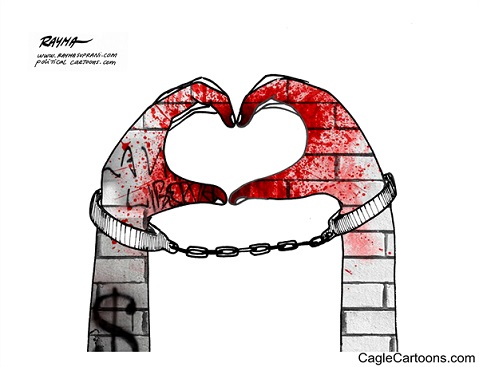Slavery in Santa Barbara
It's Called Human Trafficking

Slavery still exists in the United States, though most Americans believe the Civil War firmly ended the practice. Sadly, you may walk right by someone enslaved without realizing it.
This was the situation on Milpas Street recently when one of the authors encountered a female panhandler with two children during a school day. She inquired about the woman’s situation: Was Santa Barbara their home? Were they in need of shelter? Were they perhaps stranded here, seeking emergency funds to get back home?
The female panhandler, whose accent indicated foreign birth, became extremely fearful and agitated, looking around anxiously, and repeatedly asked to please be left alone. The children clung to each other; they didn’t resemble the woman. Nor did they look to her to protect them.
On walking away, the author couldn’t shake the feeling something was very wrong. A security guard at the shopping center approached her and said the woman and children had been dropped off in the morning and picked up in the evening for the past two days by a man in a suit driving a Cadillac Escalade.
This was likely human trafficking. The woman and children may have been forced into begging as a condition of survival, for a place to live, or food. They may be migrants, looking for a better life, but instead became captives of those who brought them into the country.
Trafficking victims’ travel documents are held by their trafficker until they work off their “debt” for migration expenses. Traffickers will threaten harm to one’s family if they try to escape. Anyone who tries to intervene, like the author, only puts them more at risk of harm, thus they are often forbidden to talk to others outside of solicitation. Interaction with the police, then, would be dreaded. The victim could be arrested, yet dares not identify their trafficker or admit their situation because of fear for their loved ones.
This is human trafficking, modern slavery, and it exists the world over. It takes on many forms, from desperate East Asian men and boys forced to perform construction labor in Dubai, to girls kidnapped from Eastern Europe and forced into prostitution in Amsterdam, to children forced into soldiering in the Congo. Trafficking doesn’t always involve movement of people across borders. Much human trafficking and slavery occurs within one’s own country, and the enslavement is by one’s fellow citizens.
Human trafficking is very profitable. Think about it like a trafficker for a moment. When you sell an illegal drug, you can only sell it once. When you sell a human being, you can sell them over and over again, for labor, sex, forced begging, organ removal, domestic servitude, and more. The industry of human trafficking is enormous, estimated to be 30 million-40 million enslaved people, worldwide, by the United Nations Office on Drugs and Crime. Women are trafficked more than any other group, followed by children. Wars, refugee crises, and terrible poverty conditions are target-rich environs for human traffickers.
The State Department estimates that 14,000-18,000 people are trafficked into the U.S. for exploitation per year. To see one human trafficking example, simply do an internet search for “Asian massage parlors prostitution.” Early news stories focused on busting prostitution in massage parlors. Goleta experienced this a few years back. More recently, police began realizing the women involved were often not willing sellers, but forced by a human trafficker.
Traffickers now often isolate their massage “staff,” don’t let them learn English other than the phrases required to solicit, and move them to another city when they begin to recognize landmarks. Some local massage businesses do not have a business listing or any Yelp reviews. However, their Craigslist ads offer “sweet Asian (and then the emoji for sex)” with pictures of young Asian girls.
It’s really sad when you read reviews on websites where American males rate the “happy ending” service they received in these places without questioning whether the girl who could barely speak English was truly a willing participant.
The United Nations Association of Santa Barbara is hosting an important seminar on Human Trafficking on January 25 at 6:30 p.m. in the Faulkner Gallery. We invite you to learn about the UN’s global work on human trafficking and hear from passionate speakers involved at the local level on stopping human trafficking right here in Santa Barbara. This is truly a global situation where you can act locally and make a difference. For more information, please go to www.unasb.org.
Sharon Byrne and Barbara Gaughen-Muller are members of United Nations Association of Santa Barbara.



